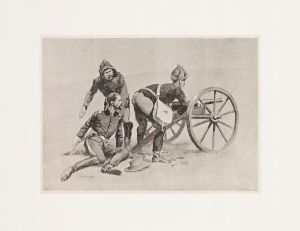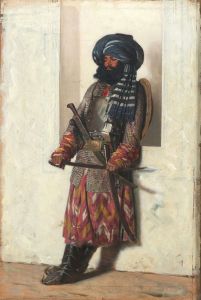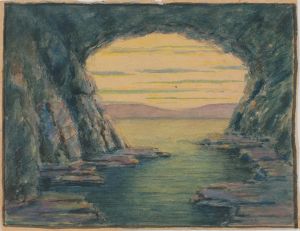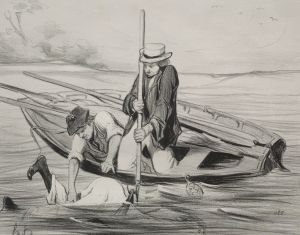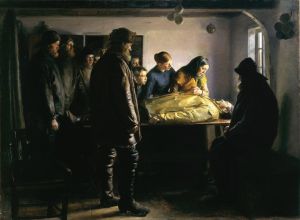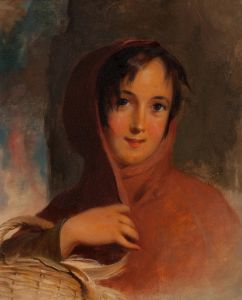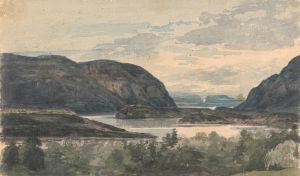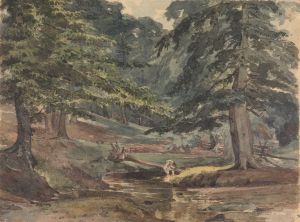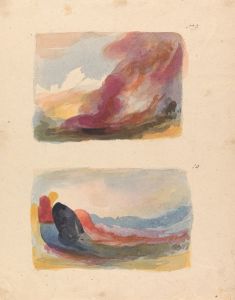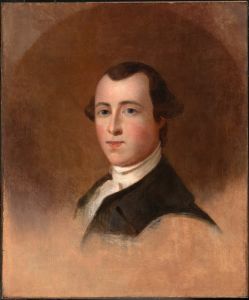
Robinson Crusoe and Friday in the Cave
A hand-painted replica of Thomas Sully’s masterpiece Robinson Crusoe and Friday in the Cave, meticulously crafted by professional artists to capture the true essence of the original. Each piece is created with museum-quality canvas and rare mineral pigments, carefully painted by experienced artists with delicate brushstrokes and rich, layered colors to perfectly recreate the texture of the original artwork. Unlike machine-printed reproductions, this hand-painted version brings the painting to life, infused with the artist’s emotions and skill in every stroke. Whether for personal collection or home decoration, it instantly elevates the artistic atmosphere of any space.
"Robinson Crusoe and Friday in the Cave" is a painting by the American artist Thomas Sully, created in 1856. Thomas Sully was a prominent portrait painter in the 19th century, known for his elegant and refined style. He was born in England in 1783 and moved to the United States, where he became one of the leading portraitists of his time. Sully's works are characterized by their attention to detail and the ability to capture the personality and essence of his subjects.
The painting "Robinson Crusoe and Friday in the Cave" is inspired by the famous novel "Robinson Crusoe" written by Daniel Defoe, first published in 1719. The novel tells the story of Robinson Crusoe, a castaway who spends 28 years on a remote tropical island, encountering cannibals, captives, and mutineers before being rescued. One of the key characters in the novel is Friday, a native man whom Crusoe saves from cannibals and who becomes his companion and servant.
In Sully's painting, the scene depicts Robinson Crusoe and Friday in a cave, a setting that suggests a moment of respite and companionship amidst their survival challenges on the island. The painting captures the relationship between the two characters, highlighting themes of friendship, survival, and cultural exchange. Sully's portrayal of the characters is likely influenced by the romanticized views of the time, focusing on the bond formed between Crusoe and Friday despite their cultural differences.
The painting is an example of how 19th-century artists often drew inspiration from literature, translating popular stories into visual art. Sully's work reflects the fascination with adventure and exploration that was prevalent during this period, as well as the interest in depicting exotic and faraway places.
"Robinson Crusoe and Friday in the Cave" is part of the collection at the Philadelphia Museum of Art, which houses a significant number of Sully's works. The museum's collection provides insight into Sully's artistic development and his contribution to American art. Sully's ability to convey narrative through his paintings is evident in this work, as he captures the essence of Defoe's story while adding his artistic interpretation.
The painting is appreciated for its composition and the way Sully uses light and shadow to create a sense of depth and atmosphere within the cave setting. The figures of Crusoe and Friday are rendered with attention to detail, showcasing Sully's skill in portraiture even within a narrative context.
Overall, "Robinson Crusoe and Friday in the Cave" is a testament to Thomas Sully's talent and his ability to bring literary characters to life through his art. The painting remains an important piece within the context of 19th-century American art, reflecting both the artistic trends of the time and the enduring appeal of Defoe's classic novel.





